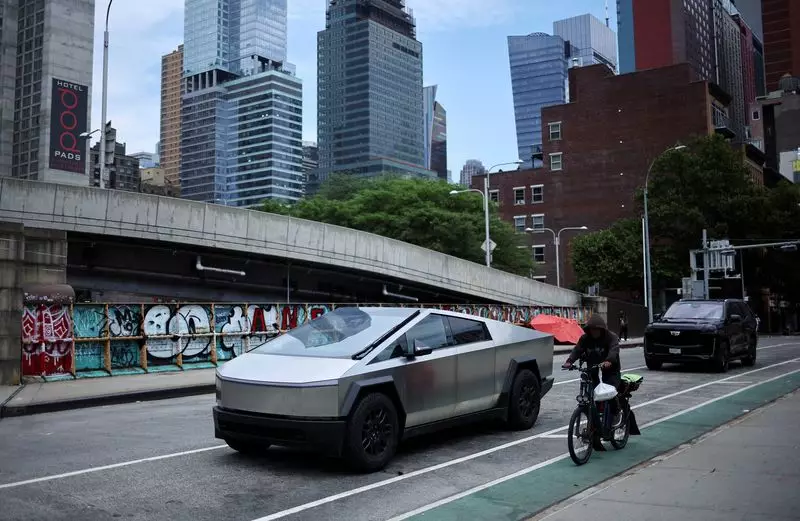Tesla, the electric vehicle giant, has long been positioned as a leader in automotive innovation, yet the recent fourth-quarter performance of the highly anticipated Cybertruck calls this narrative into question. Despite aggressive price cuts, Tesla managed to deliver around 15,000 Cybertrucks during the quarter and an estimated total of just 35,000 to 40,000 units for the entire year. This is significantly short of the ambitious initial claim of 2 million orders for the vehicle. With such numbers surfacing, analysts from Bernstein have begun questioning whether the Cybertruck could be deemed a “bust,” given its underwhelming market reception and performance.
The apparent struggle for the Cybertruck is compounded by concerns over Tesla’s gross margins. Bernstein analysts highlighted that the Cybertruck is presently not achieving gross margin positivity, signaling potential long-term viability issues. Their assessment suggests that the four-year development timeline of the Cybertruck represents a strategic miscalculation that has diverted valuable resources away from Tesla’s immediate need for more affordable vehicle options. This shift in focus may be detrimental, as the market is poised for more budget-friendly electric cars, something Tesla is currently lacking.
Adding to these financial woes are Tesla’s declining auto gross margins, exacerbated by aggressive price promotions and financing incentives in the last quarter. Bernstein forecasts that without the cushion of regulatory credits, Tesla’s auto gross margins may plunge below 15%, a troubling prospect that puts them at a competitive disadvantage compared to traditional internal combustion engine manufacturers, with the exception of Ford. Moreover, the projected decline in annual earnings—from $2.60 in 2023 to $2.10 in 2024—paints a grim picture for Tesla’s profitability trajectory.
Another avenue of scrutiny for Tesla has been its foray into the robotaxi market. As the company shifts investor attention towards autonomous technology, Bernstein’s analysts express skepticism regarding Tesla’s capacity to maintain a competitive edge in this space. Factors such as a limited sensor suite and potential regulatory challenges pose considerable hurdles. The analysts believe that even if Tesla were to achieve Level 5 autonomy first, sustaining this lead might prove difficult, especially with rapid advancements in AI. The democratization of this technology could level the playing field, effectively eliminating excessive pricing premiums and complicating Tesla’s efforts to secure extraordinary profits.
In contrast to the disappointment surrounding the Cybertruck, Tesla did report a 2% increase in Q4 deliveries year-over-year, totaling 495,600, although this figure fell short of expectations and marked a slight dip in annual deliveries. On a brighter note, energy storage shipments soared, witnessing a remarkable growth of 244% to reach 11 GWh during the quarter. However, as Tesla moves forward, the critical question remains: can the company reassess its strategic priorities fast enough to adapt to an evolving market landscape? Without a solid recovery plan, Tesla risks losing its position as an innovator in the increasingly competitive electric vehicle sector.

